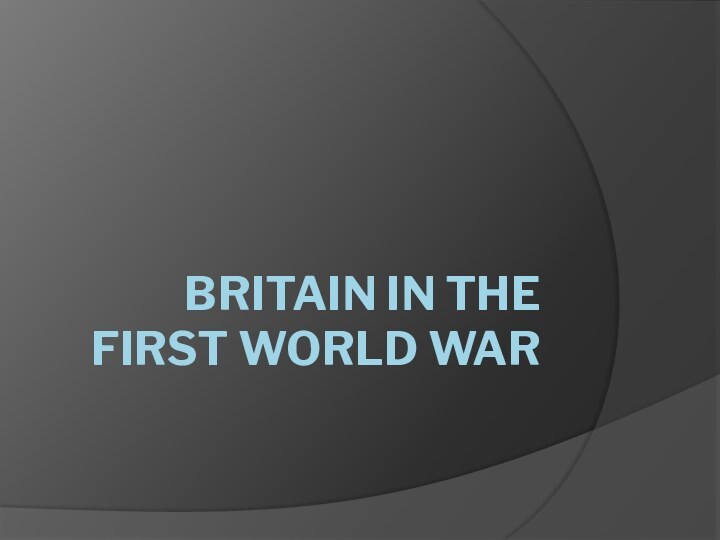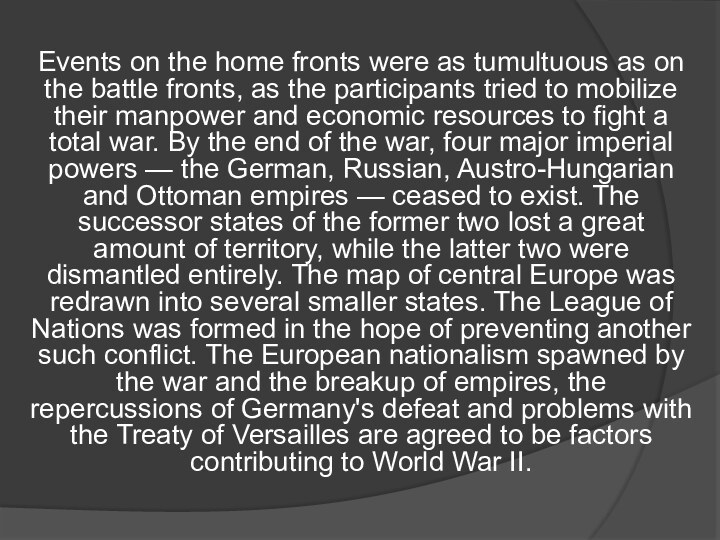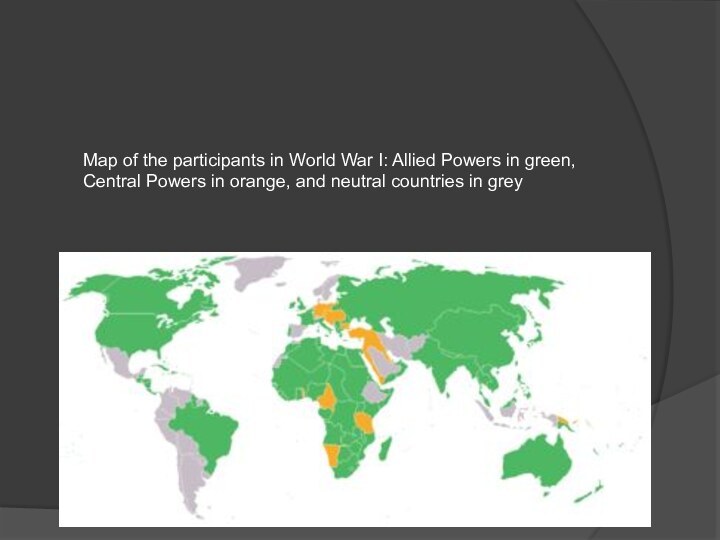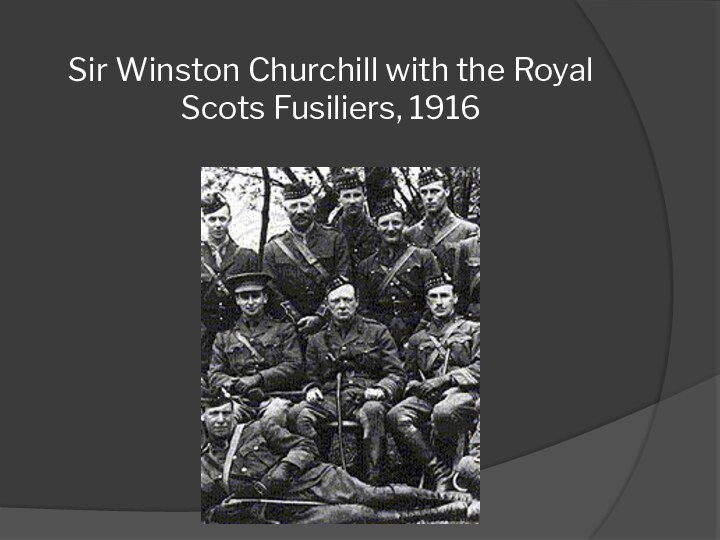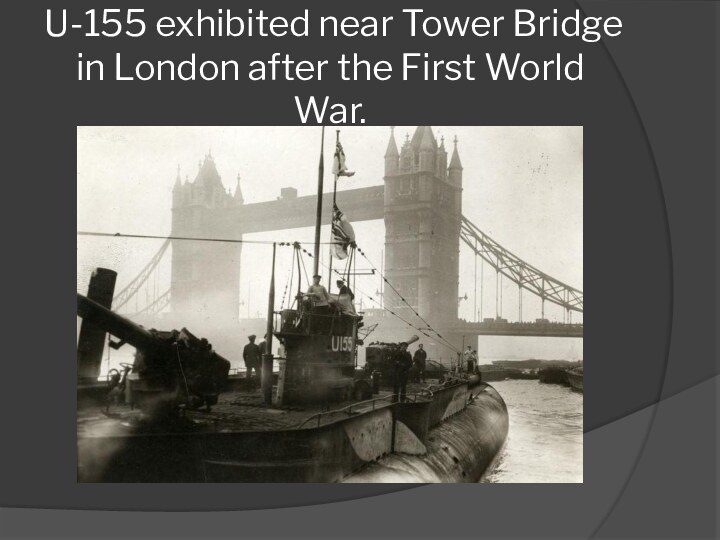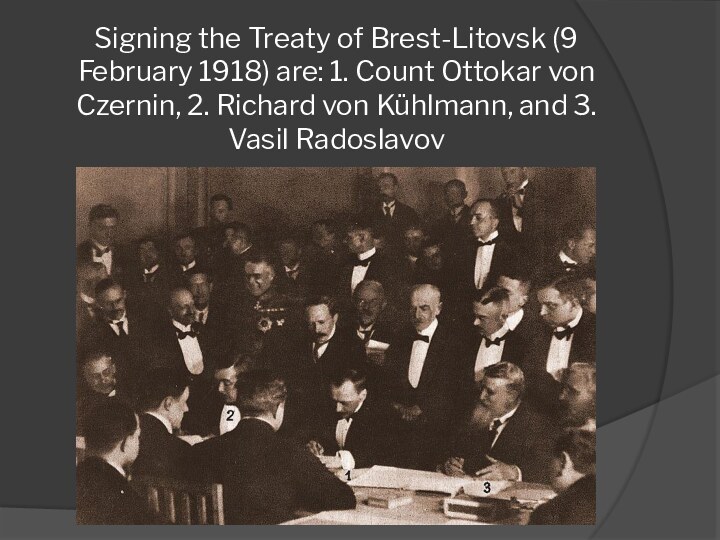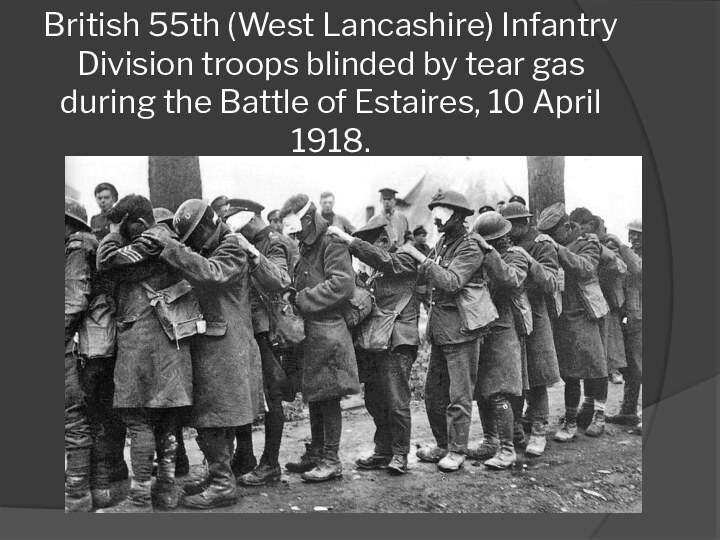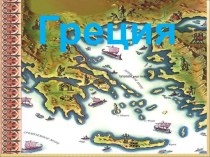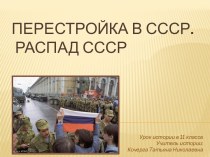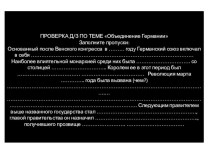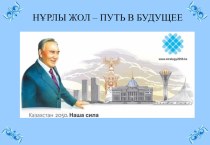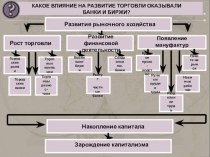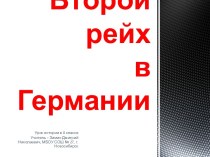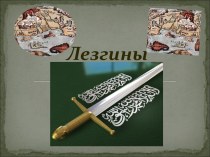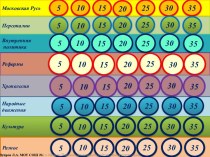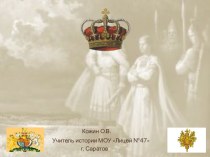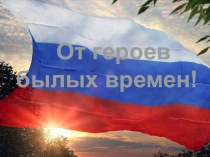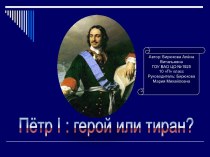Слайд 2
World War I (WWI), which was predominantly called
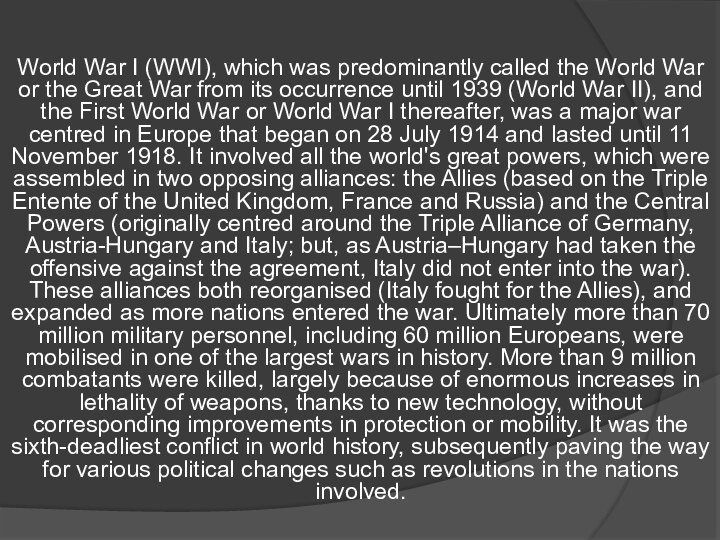
the World War or the Great War from its
occurrence until 1939 (World War II), and the First World War or World War I thereafter, was a major war centred in Europe that began on 28 July 1914 and lasted until 11 November 1918. It involved all the world's great powers, which were assembled in two opposing alliances: the Allies (based on the Triple Entente of the United Kingdom, France and Russia) and the Central Powers (originally centred around the Triple Alliance of Germany, Austria-Hungary and Italy; but, as Austria–Hungary had taken the offensive against the agreement, Italy did not enter into the war). These alliances both reorganised (Italy fought for the Allies), and expanded as more nations entered the war. Ultimately more than 70 million military personnel, including 60 million Europeans, were mobilised in one of the largest wars in history. More than 9 million combatants were killed, largely because of enormous increases in lethality of weapons, thanks to new technology, without corresponding improvements in protection or mobility. It was the sixth-deadliest conflict in world history, subsequently paving the way for various political changes such as revolutions in the nations involved.
Слайд 3
Long-term causes of the war included the imperialistic
foreign policies of the great powers of Europe, including
the German Empire, the Austro-Hungarian Empire, the Ottoman Empire, the Russian Empire, the British Empire, the French Republic, and Italy. The assassination on 28 June 1914 of Archduke Franz Ferdinand of Austria, the heir to the throne of Austria-Hungary, by a Yugoslav nationalist in Sarajevo, Bosnia and Herzegovina was the proximate trigger of the war. It resulted in a Habsburg ultimatum against the Kingdom of Serbia. Several alliances formed over the previous decades were invoked, so within weeks the major powers were at war; via their colonies, the conflict soon spread around the world.
Слайд 4
On 28 July, the conflict opened with the

Austro-Hungarian invasion of Serbia, followed by the German invasion
of Belgium, Luxembourg and France; and a Russian attack against Germany. After the German march on Paris was brought to a halt, the Western Front settled into a static battle of attrition with a trench line that changed little until 1917. In the East, the Russian army successfully fought against the Austro-Hungarian forces but was forced back from East Prussia and Poland by the German army. Additional fronts opened after the Ottoman Empire joined the war in 1914, Italy and Bulgaria in 1915 and Romania in 1916. The Russian Empire collapsed in March 1917, and Russia left the war after the October Revolution later that year. After a 1918 German offensive along the western front, United States forces entered the trenches and the Allies drove back the German armies in a series of successful offensives. Germany, which had its own trouble with revolutionaries at this point, agreed to a cease-fire on 11 November 1918, later known as Armistice Day. The war had ended in victory for the Allies.
Слайд 5
Events on the home fronts were as tumultuous
as on the battle fronts, as the participants tried
to mobilize their manpower and economic resources to fight a total war. By the end of the war, four major imperial powers — the German, Russian, Austro-Hungarian and Ottoman empires — ceased to exist. The successor states of the former two lost a great amount of territory, while the latter two were dismantled entirely. The map of central Europe was redrawn into several smaller states. The League of Nations was formed in the hope of preventing another such conflict. The European nationalism spawned by the war and the breakup of empires, the repercussions of Germany's defeat and problems with the Treaty of Versailles are agreed to be factors contributing to World War II.
Слайд 6
Британский пропагандистский плакат.
«Империи нужны мужчины!
Австралия, Канада, Индия, Новая
Зеландия
Все откликнитесь на зов.
С поддержкой молодых львов старый лев
бросает вызов своим врагам.
Записывайтесь на службу сегодня.»
Слайд 7
Clockwise from top: trenches on the Western Front;
a British Mark IV Tank crossing a trench; Royal
Navy battleship HMS Irresistible sinking after striking a mine at the Battle of the Dardanelles; a Vickers machine gun crew with gas masks, and German Albatros D.III biplanes
Слайд 8
Map of the participants in World War I:
Allied Powers in green, Central Powers in orange, and
neutral countries in grey
Слайд 9
HMS Dreadnought. A naval arms race existed between
the United Kingdom and Germany.
Слайд 10
Lettow surrendering his forces to the British at
Abercorn
Слайд 11
Declaration of war. Austro-Hungarian government's telegram to the
government of Serbia on 28 July 1914.
Слайд 12
Sir Winston Churchill with the Royal Scots Fusiliers,
1916
Слайд 13
In the trenches: Royal Irish Rifles in a
communications trench on the first day on the Somme,
1 July 1916.
Слайд 14
Canadian troops advancing behind a British Mark II
tank at the Battle of Vimy Ridge.
Слайд 15
Officers and senior enlisted men of the Bermuda
Militia Artillery's Bermuda Contingent, Royal Garrison Artillery, in Europe.
Слайд 16
The British Grand Fleet making steam for Scapa
Flow, 1914
Слайд 17
U-155 exhibited near Tower Bridge in London after
the First World War.
Слайд 18
A British artillery battery emplaced on Mount Scopus
in the Battle of Jerusalem.
Слайд 19
Signing the Treaty of Brest-Litovsk (9 February 1918)
are: 1. Count Ottokar von Czernin, 2. Richard von
Kühlmann, and 3. Vasil Radoslavov
Слайд 20
British 55th (West Lancashire) Infantry Division troops blinded
by tear gas during the Battle of Estaires, 10
April 1918.
Слайд 21
RAF Sopwith Camel. In April 1917, the average
life expectancy of a British pilot on the Western
Front was 93 flying hours.
Слайд 23
Shortly before the war, British General Horace Smith-Dorrien
predicted a catastrophic war which should be avoided at
almost any cost.
Слайд 24
The Beaumont Hamel Newfoundland Memorial in the Somme.
